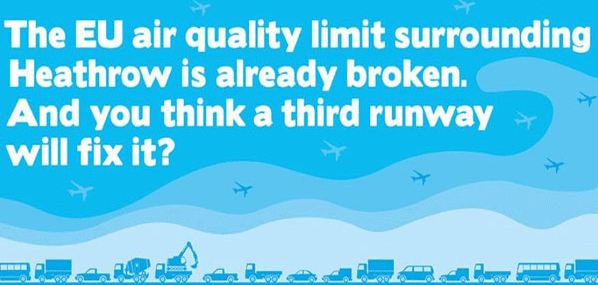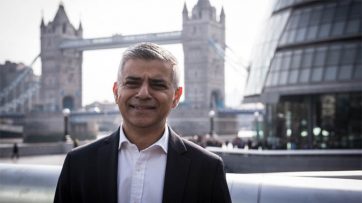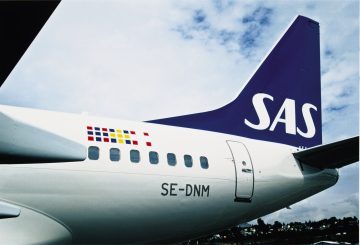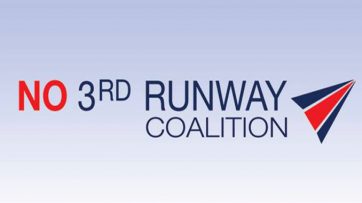London councils say report is not realistic and time to respond is far too short.
The Airports Commission has published a highly technical consultation on air quality, with only 14 working days for responses (3 weeks). It is presented in a way to make it very hard indeed for non-experts to understand.
The councils say the report underplays the true impacts of Heathrow expansion and is “not credible or realistic”.
Earlier this year a Supreme Court Judgement ordered ministers to produce a new action plan for bringing the UK’s pollution hotspots, like Heathrow, to within the legal limit “as soon as possible”. The 2M councils say it will be impossible for the Government to sanction a major expansion of Heathrow without contravening this ruling.
The 2M Group is currently preparing a technical response to the consultation which will be published in the coming days.
The 2M Group is a cross-party alliance of councils concerned about the environmental impact of Heathrow operations on their communities.
The group, which took its name from the 2 million residents of the original 12 authorities, now represents a combined population of 5 million people and was successful in 2010 in overturning plans for a third Heathrow runway in the High Court.
The councils are calling on local people to respond to the consultation before it closes on May 29.
People can respond by email to air.quality@airports.gsi.gov.uk.
Ray Puddifoot, leader of Hillingdon council, said:
“Davies is telling us that Heathrow can vastly increase flights, passenger numbers and its freight operation, but that there will be no extra traffic on local roads. This is not credible or realistic.”
Mr Puddifoot said a third runway would increase pollution levels for roughly 47,000 homes and break EU nitrogen dioxide limits.
Lord True, leader of Richmond council, added:
“Why is Davies estimating pollution levels in 2030, long before the expanded airport is at full capacity? People want to know the full and true impacts on their health once the runways are fully utilised and road traffic is at its peak.”
Ravi Govindia, leader of Wandsworth Council, said:
“It’s vital local people examine these findings and share their concerns with the commission. We simply don’t believe Heathrow can be expanded without increasing pollution levels which are already above legal limits. This report is misleading and tries to given the airport a way out and Davies cannot be allowed to get away with it.
“We have only been given three weeks to analyse and respond to this highly technical report. It’s a ridiculous timescale and there could well be more flaws we haven’t discovered yet. We will keep residents updated as we continue to examine the details.
“We are also going straight to ministers over this and asking them to consider what will happen if Heathrow expansion is approved and then inevitably these pollution levels fail to meet legal limits. The country could have to choose between restricting Heathrow’s operation or paying hundreds of millions in EU fines. This is clearly the wrong place to increase our aviation capacity.”
The 2M Group
2M members want to reduce night flights, preserve the noise relief provided by runway alternation and to strengthen noise and air quality controls in the areas around the airport. The group is not anti-Heathrow but works together to improve the environment and protect the quality of life for local people.
The 2M Group’s key concerns include:
- Pollution estimates go up to 2030, around twenty years before the expanded airport would reach full capacity. 2M expect nitrogen dioxide levels to continue to rise until 2050 as Heathrow’s operation intensifies but these increases are not accounted for.
- Pollution impacts are depressed by the inclusion of a series of controversial and untested mitigation measures, like a new congestion charging zone and a rerouting of the A4. These schemes have not been developed in detail and may not be possible.
- The report makes optimistic projections about future car engine technologies reducing the levels of NO2 emissions from the road network. This is a gamble, not a serious projection.
- The report suggests there will be no extra traffic on local roads traffic after Heathrow vastly increase flights, passenger numbers and its freight operation. This is not credible or realistic.
- Even after the ultra low traffic levels and futuristic clean engines are factored in the report still projects an increase in pollution levels for around 47,000 homes, compromising the health of around 121,000 people and costing £10.8m through increased numbers of hospital appointments. This is far too high a price.
N.B. Image credit: GatwickObviously
Internet links
Airports Commission: air quality assessment







